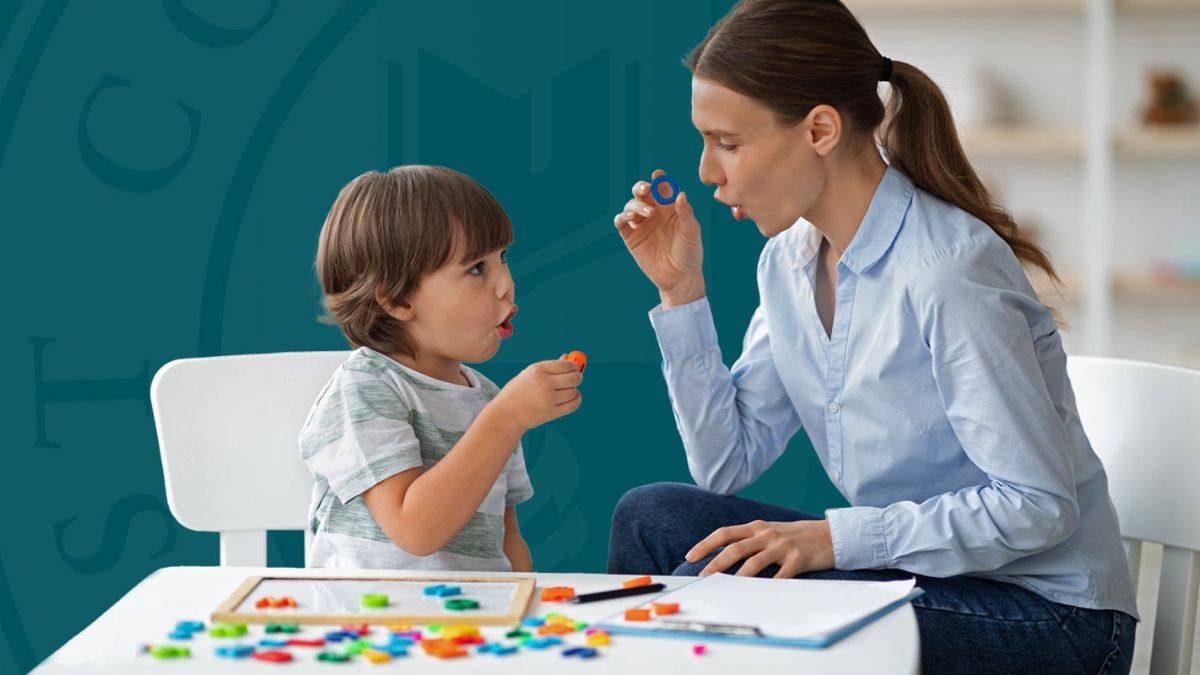Health
The Role of Professional Liability in the Medical Community

Healthcare professionals are tasked with providing safe and effective care. Still, they face the risk of legal claims due to errors, misdiagnoses, or unexpected outcomes, which can negatively impact their careers and financial stability. Professional liability insurance serves as a safeguard, protecting medical practitioners from the high costs of legal defense and potential settlements. Beyond financial protection, it also ensures that patients receive fair resolutions in medical disputes. Understanding the importance of liability coverage helps healthcare providers navigate risks while focusing on their primary duty—delivering quality patient care with confidence and security.
Why Medical Liability Matters
In the intricate and high-stakes world of healthcare, professionals navigate a landscape filled with immense responsibilities and profound risks. Every interaction with patients holds critical importance, potentially harboring elements that may result in legal action. This ever-present possibility underscores the essential nature of physician malpractice insurance, a fundamental pillar of financial security for medical practitioners. Such coverage protects from immediate financial burdens associated with legal claims and lawsuits. It offers long-term peace of mind, enabling practitioners to engage fully with their practice without fearing potential litigation. The assurance provided by this insurance allows medical professionals to prioritize what truly matters: the health and well-being of their patients while trusting that their careers and financial futures are safeguarded against unforeseen legal obstacles.
Different Types of Coverage
The medical community’s diverse practices and unique liabilities necessitate tailored liability coverage to meet the needs of different professions. Comprehensive policy options are designed to cover practitioners for specific risks, enhancing the security of medical practices and allowing healthcare providers to concentrate on patient care.
Understanding the differences between claims-made and occurrence policies is crucial for medical professionals when choosing liability insurance. Claims-made policies provide coverage only when both incidents and claims occur within the policy’s active period, requiring continuous coverage to protect against lingering claims. On the other hand, occurrence policies offer broader and more flexible coverage for incidents during the policy’s active duration, regardless of when the claim is filed.
Understanding these differences is crucial for medical professionals deciding on insurance. This ensures they choose a policy that effectively corresponds with their specific practice risks and preferences. This decision-making process is vital for safeguarding livelihoods and maintaining uninterrupted protection from potential liabilities.
The Cost of Inadequate Coverage
Neglecting to secure adequate liability coverage can lead to dire financial repercussions, casting long shadows on both personal and professional fronts. The healthcare industry is fraught with legal complexities and risks, including malpractice suits, which can quickly accumulate into substantial financial burdens if not preemptively managed through comprehensive insurance. Malpractice lawsuits often result in significant financial losses for healthcare providers each year, reflecting the immense financial risks of inadequate insurance coverage. This potential for economic strain accentuates the critical nature of maintaining robust, sufficient coverage to shield against overwhelming legal costs and to protect one’s professional reputation and stability in the competitive medical landscape.
How to Choose the Right Policy
Selecting the right liability insurance policy is a nuanced process that demands careful consideration guided by evaluating one’s unique practice needs and inherent risks. Healthcare professionals must collaborate with experienced insurance agents to navigate this decision-making landscape. These experts can provide valuable insights into the array of available policy options and assist in tailoring coverage to meet specific practice demands. This strategic partnership ensures that the chosen policy comprehensively addresses all conceivable risks, averting potential future complications and financial distress. Proactively managing insurance needs is essential to guaranteeing professional resilience, enabling healthcare providers to continue offering top-notch care with confidence and minimal disruption.
Real-Life Examples of Liability Challenges
Legal claims against healthcare professionals are potent reminders of the inherent risks within this demanding field. These unexpected situations can impose significant strain on both personal and professional levels. Sharing real-life experiences within the medical community offers practitioners invaluable insights into potential pitfalls while reinforcing the integral role of comprehensive liability coverage. These narratives provide crucial lessons and nurture a community of preparedness and support among medical professionals, encouraging a forward-thinking approach to handling legal risks through adequate insurance coverage. Such shared knowledge forms the backbone of a supportive professional environment that prioritizes collective learning and risk mitigation.
Staying Updated on Policy Changes
In an ever-evolving healthcare landscape, medical professionals must keep abreast of amendments and policy terms and conditions updates. Regularly revisiting and reviewing coverage details helps ensure the insurance remains adequate and responsive to current industry practices and legal standards. This proactive vigilance guards against unwelcome surprises when claims occur and assures sustained protection under the policy. By embracing this forward-thinking approach toward managing insurance needs, healthcare providers can maintain solid legal safeguards, aligning with their unwavering commitment to deliver the best possible patient care while securing their professional future.
Conclusion: Safeguarding Your Medical Practice
Investing in the appropriate professional liability insurance does more than protect against potential legal claims; it underpins a practitioner’s peace of mind, allowing them to focus on what truly matters—their patients. Coverage is unwavering support, enabling healthcare professionals to confidently navigate the industry’s complexities, knowing their careers and reputations are secured against unforeseen legal challenges. Thus, professional liability insurance becomes not just a financial obligation but a vital pillar in the maintenance and growth of any successful medical practice, ultimately fostering an environment where healthcare excellence thrives, and patient well-being remains at the forefront.
Health
The Power of Gentle Fitness Classes for Confidence and Mobility in Later Years

Why Fitness Matters in Later Years
Maintaining fitness in later years is crucial for overall health and quality of life. Regular physical activity helps preserve muscle mass, improve balance, and maintain joint flexibility, reducing the risk of falls and injuries. Beyond the physical benefits, exercise supports cardiovascular health, aids in weight management, and promotes better sleep patterns. Staying active can also boost mental well-being by reducing stress, enhancing mood, and sharpening cognitive function, making daily tasks easier and more enjoyable.
For older adults seeking guidance and motivation, working with a certified professional can make a significant difference. Programs such as personal training Reston VA offer tailored exercise plans that accommodate individual fitness levels and goals. Personalized support ensures safe, effective routines that maximize results and help maintain independence and vitality as you age.
Gentle Fitness Classes: Options and Benefits
Tai Chi: Balance, Calmness, and Coordination
Tai Chi is a practical, gentle exercise for seniors, often referred to as “meditation in motion.” It features slow, deliberate movements and focused breathing, making it accessible to everyone. Regular practice enhances balance, flexibility, and posture, thereby reducing the risk of falls and promoting independent living as one ages.
Water-Based Exercise: Joint-Friendly and Fun
Water-based exercises, such as swimming and water aerobics, are beneficial for aging joints because buoyancy reduces impact and the risk of injury. They help individuals with osteoarthritis or mobility issues strengthen their muscles and improve their heart health without experiencing pain. These exercises support joint movement, lower blood pressure, promote heart health, and aid weight management. Group classes add social fun with music and games.
Strength Training: Energy, Balance, and Independence
Strength training helps seniors counteract muscle loss with simple exercises, such as chair squats and wall push-ups, that improve movement, balance, posture, and overall energy. Regular, guided classes ensure safety, motivation, and progress, leading to better ability and confidence to enjoy activities.
The Social and Emotional Impact of Group Classes
Participating in group fitness classes greatly boosts social involvement and emotional health among seniors. These classes not only improve physical health but also reduce loneliness by building bonds among peers with similar objectives. The friendship and camaraderie fostered encourage ongoing participation and strengthen a sense of community. The encouraging environment motivates members, and social events centered around fitness add extra meaning to their lives outside the gym.
Getting Started Safely
Begin exercising with guidance from a doctor or trainer, especially if you have health concerns. Safety is key, so consult with an expert to plan your activity. Community centers and gyms typically offer beginner classes for seniors, featuring trained instructors who can modify exercises to accommodate different mobility levels. Start slowly, pay attention to how your body responds, and keep a consistent routine. Gentle activities, such as Tai Chi, yoga, or water aerobics, can improve your health, foster social connections, and help you appreciate nature. Wear comfortable clothing, stay well-hydrated, and celebrate your progress, no matter how small.
Conclusion
Embracing gentle fitness classes in later years provides benefits that extend far beyond the physical. These programs support mobility and independence, enrich social lives, strengthen emotional health, and help preserve confidence for whatever challenges or adventures the future may hold. No matter your current fitness level, there’s a class or activity that can help you progress—with strength, balance, and joy, making every stage of life vibrant and fulfilling.
Health
Innovative Applications of Modern Chemical Blending Technologies

Modern chemical manufacturing is experiencing a transformation propelled by advanced blending technologies. These improvements are streamlining processes, raising product quality, and prioritizing sustainability across industries. Whether it’s pharmaceuticals or agriculture, innovations in chemical blending are unlocking solutions to some of the world’s toughest challenges. Choosing the right industrial mixer is becoming critical as manufacturers face heightened demands for consistency, safety, and environmental compliance.
Empowered by digitalization, artificial intelligence, and new eco-friendly approaches, today’s chemical blending practices are radically different from those of just a decade ago. As companies strive to minimize waste and resource use, novel technologies are enabling shifts toward greener production and greater operational agility.
Advanced Mixing Systems in Agriculture
The agricultural sector is a prime example of how advanced mixing technologies yield real-world benefits. New systems incorporate turbulence-enhancing mixer designs and closed-loop controls that facilitate optimal blending of agrochemicals. These improvements ensure that inputs like fertilizers, pesticides, and micronutrients are delivered with precision, minimizing chemical runoff and environmental contamination. With digital sensors tracking pH, temperature, and nutrient loads in real time, farmers are seeing increased yields while reducing waste.
Moreover, digital control systems can automate mixing operations, allowing farmers and agronomists to focus on crop management rather than manual mixing. As sustainable farming becomes ever more critical, innovations in mixing technology act as a force multiplier, fostering food security and environmental protection.
AI and Machine Learning in Chemical Blending
Artificial intelligence and machine learning are redefining chemical blending by delivering process intelligence once unimaginable. AI-based models can predict how different chemicals will interact, optimize formulations, and rapidly simulate scenarios to identify the most effective blends. In manufacturing settings, these tools monitor key variables and make automated adjustments, ensuring consistently high-quality products and boosting operational efficiency.
The use of AI extends to preventive maintenance as well—monitoring vibrations, temperature, and output consistency can predict potential failures before they disrupt production. Importantly, intelligent blending systems can also help reduce energy usage, furthering sustainability efforts in large-scale chemical operations.
Eco-Friendly Additive Processes
As global stakeholders emphasize greener production, chemical researchers are exploring alternatives to longstanding synthetic processes. Innovations such as enzyme-catalyzed, light—driven fluorination enable the production of valuable chemicals without harsh reagents or excessive waste. This eco-friendly approach is already being applied in the manufacture of pharmaceuticals, crop care solutions, and renewable fuel additives, aligning the chemical sector with global sustainability targets.
These process improvements also support regulatory compliance by decreasing the production of hazardous byproducts. Companies pioneering such advances position themselves for growth as eco-conscious markets—and government regulations—continue to evolve.
Enhanced Mixing in Porous Media
Mixing efficiency is a constant challenge, especially in environments where liquids move through porous materials. Researchers are tackling this by adding flexible polymers to fluids, which causes elastic instabilities and creates turbulence-like mixing. The result is faster reactions, better material dispersion, and shorter mixing times, ultimately leading to greater product consistency and lower operational costs.
This technology is particularly relevant for chemical processing in soil remediation, oil recovery, and specialty manufacturing, where confined environments can impede traditional mixing methods.
Water-Based Release Systems in Composites
The composite materials industry is shifting away from solvent-based and per- and polyfluoroalkyl substances (PFAS)-containing release agents, spurred by both performance and environmental imperatives. Water-based release systems now offer equivalent—or better—performance, reducing emissions, plant odor, and clean-up complexity.
Manufacturers implementing these technologies are not only meeting stricter regulatory requirements but also enhancing worker safety and lowering costs. With demand for PFAS-free solutions rapidly increasing, water-based release systems are quickly becoming the new industry standard.
Digitalization and Cloud Computing
Digitalization is revolutionizing chemical operations at every level. By harnessing data analytics, cloud platforms, and digital twins, chemical companies can optimize production, predict equipment failures, and accelerate research and development. Cloud-connected sensors and machine learning models collect, process, and act on vast amounts of data, providing real-time visibility and improving both quality and safety.
Digital twins enable operators to run virtual simulations that test various blending conditions, minimizing downtime and maximizing output. As more chemical manufacturers invest in digitalization, industry-wide efficiency gains are expected—driving down costs while pushing up standards for quality and safety.
Conclusion
Modern chemical blending technologies are unlocking new efficiencies, supporting sustainability, and enabling previously unattainable levels of product quality across sectors. As blending systems become more intelligent and environmentally aware, industries from agriculture to advanced composites are poised to benefit. By adopting these innovations, chemical manufacturers can adapt to a rapidly changing world while remaining competitive and compliant in an era of global transformation.
Health
The Last Step That Matters Most: Building Real-World Communication After Speech Therapy

Introduction
Completing speech therapy marks a significant milestone, yet the journey doesn’t truly end once therapy sessions conclude. The ability to confidently communicate in everyday situations is, for many, the real measure of lasting progress. Applying the tools you’ve acquired in therapy can sometimes feel daunting, but mastering the final link in speech therapy means building resilience, independence, and success well beyond the clinic room.
Bridging the gap between structured practice and spontaneous conversation isn’t always straightforward. The transition requires not only persistence but also creative strategies and consistent support. By focusing on real-world communication, individuals can transform their efforts in therapy into meaningful, lifelong skills.
Bridging the Gap Between Therapy and Daily Life
Speech therapy equips individuals with a powerful foundation, but it is the real-world application that truly reinforces these accomplishments. Everyday environments—whether at home, work, or in public—provide the varied, unpredictable contexts necessary for communication growth. Practicing conversation skills outside the therapy room promotes adaptation and flexibility, enabling individuals to tailor their communication style to any situation. This adaptive approach not only builds confidence but also ensures improvements are both sustainable and relevant to daily life.
Taking proactive steps, such as planning opportunities for social interaction or seeking new experiences, can provide invaluable practice. For instance, joining a hobby group or engaging in neighborhood events introduces fresh conversational contexts while offering a safe space to stretch communication boundaries.
The Role of Support Systems
Family, friends, and colleagues have tremendous influence on the successful integration of speech therapy skills. Their encouragement provides a sense of safety and motivation, fostering an environment where communication can be practiced without fear of judgment. Transparent discussions about progress, setbacks, and personal goals strengthen relationships and reinforce the journey toward clear, confident speech.
Establishing open communication among loved ones also creates accountability and shared understanding, offering gentle reminders and positive reinforcement during daily interactions. Peer support groups, both online and in local communities, provide additional mentorship and practical advice, helping to navigate everyday communication challenges with empathy and confidence. You can learn more about the value of community participation in communication recovery in this resource from Psychology Today.
Overcoming Challenges
Navigating real-world communication often means confronting setbacks and unexpected hurdles. Triggers like unfamiliar environments, group settings, or fast-paced conversations may bring about anxiety or self-doubt. Recognizing these triggers and developing healthy coping mechanisms—such as mindful breathing or prompt clarification requests—can help manage stress and maintain composure. Celebrate small victories, as each successful conversation, no matter how brief, is a step in the right direction.
Setting realistic, incremental goals and tracking progress can demystify the transition. By breaking larger aspirations into manageable steps—like ordering food at a restaurant or joining a discussion at work—progress becomes both measurable and motivating. Remember, the process is a journey: challenges are natural, solutions are attainable, and persistence always pays off.
Embracing Continuous Learning
Language and communication skills are dynamic, evolving as individuals encounter new people, situations, and challenges. Embracing the mindset of ongoing learning ensures that growth doesn’t plateau after therapy. Regularly seeking feedback from trusted peers and remaining open to adjusting techniques fosters adaptability and long-term competence.
Staying engaged with speech enrichment opportunities—such as public speaking workshops, book clubs, or additional language courses—can keep skills sharp and relevant to changing circumstances. A willingness to try new approaches, adapt to feedback, and explore unfamiliar conversational terrain is at the heart of lifelong communication success.
Conclusion
The last step that matters most in the journey after speech therapy is transitioning skills from the clinic to the complexities of daily life. By focusing on the final link in speech therapy—integrating learned techniques into real-world communication—individuals unlock the confidence and independence essential for meaningful connection. With strong support systems, mindful strategies, and a desire for lifelong growth, this crucial step leads to enduring success in every conversation ahead.
-

 GENERAL12 months ago
GENERAL12 months agoFrom Fan Art to Original Works: The Diversity of doujindesu Creations
-

 Entertainment8 months ago
Entertainment8 months agoEnchantment & Excitement: Crafting Unforgettable Event Experiences
-

 GENERAL9 months ago
GENERAL9 months agoEngland Business Visa Requirements for American and International Citizens in 2025: A Guide for Entrepreneurs
-

 GENERAL8 months ago
GENERAL8 months agoCrossword Conundrum: The Significance of vault opener nyt crossword
-

 GENERAL11 months ago
GENERAL11 months agoLatest Trends in Men’s and Women’s Jackets for the Upcoming Season
-

 GENERAL8 months ago
GENERAL8 months agoExploring the World of nhentai.nef: A Comprehensive Guide for New Users
-

 Health12 months ago
Health12 months agoDiscovering gel ooru: The Ultimate Guide to This Unique Traditional Craft
-

 GENERAL1 year ago
GENERAL1 year agoWhy raterpoint is Revolutionizing Customer Feedback
